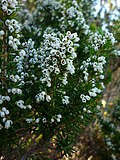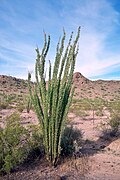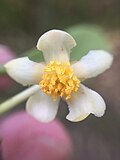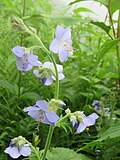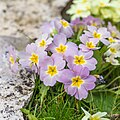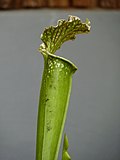
The Primulaceae, commonly known as the primrose family, are a family of herbaceous and woody flowering plants including some favourite garden plants and wildflowers. Most are perennial though some species, such as scarlet pimpernel, are annuals.
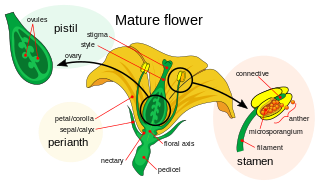
In botany, the style of an angiosperm flower is an organ of variable length that connects the ovary to the stigma. The style does not contain ovules; these are limited to the region of the gynoecium called the "ovary".

Theophrastoideae is a small subfamily of flowering plants in the family Primulaceae. It was formerly recognized as a separate family Theophrastaceae. As previously circumscribed, the family consisted of eight genera and 95 species of trees or shrubs, native to tropical regions of the Americas.

Hydrostachys is a genus of about 22 species of flowering plants native to Madagascar and southern and central Africa. It is the only genus in the family Hydrostachyaceae. All species of Hydrostachys are aquatic, growing on rocks in fast-moving water. They have tuberous roots, usually pinnately compound leaves, and highly reduced flowers on dense spikes.
Klaus Kubitzki was a German botanist. He was Emeritus professor in the University of Hamburg, at the Herbarium Hamburgense. He is known for his work on the systematics and biogeography of the angiosperms, particularly those of the Neotropics, and also the floristic record of the Tertiary era. His plant systematic work is referred to as the Kubitzki system. He was a member of the American Society of Plant Taxonomists.

Lamanonia is a genus of trees in the family Cunoniaceae. It is endemic to South America.

Putterlickia, variously called spikethorns, false spike thorns, mock spike thorns and bastard spike thorns, are a genus of flowering plants in the staff vine and bittersweet family Celastraceae, native to South Africa, Eswatini and Mozambique. Endophytic bacteria in their roots produce maytansine.
Quetzalia are a genus of flowering plants in the staff vine and bittersweet family Celastraceae, disjunctly distributed in Mexico, Central America, and Brazil. They can be trees, shrubs or lianas. Cyrus Longworth Lundell split them off from Microtropis in 1970, overriding his own 1939 findings.



















